Until the 1700s, only Native American tribes lived in this area, but now it is inhabited by a multicultural society with the largest Ukrainian diaspora in the world. Among the vast prairies, dense forests, numerous lakes and rivers, a huge space is occupied by wheat fields. This is the province of Saskatchewan, Canada.
Location and population
Saskatchewan is located in the southern territories in central Canada. On its southern side, this province borders the United States of America, on the other sides it is surrounded by the Canadian provinces: in the west – Alberta, in the north-the Northwest Territories, in the east – Manitoba, in the northeast-Nunavut.
Saskatchewan occupies 6.5 % of Canada’s territory, which corresponds to 651,036 km2.
This area is home to about 1,150,000 people, which is almost 3.2% of the Canadian population.
The average population density is 1.86 persons / m2, with approximately half of all residents living on the southern side of the province.
According to the 2006 Canadian Census, the largest ethnic group in Saskatchewan is German (30 %). In second place – the British (26.5 %), followed by Scots (19 %), Irish (15%) and Ukrainians (almost 14%). The descendants of the indigenous inhabitants of these lands-Indians-occupy the 8th largest number among other ethnic groups (only 12 %).
The majority of Saskatchewan residents – almost 86% – listed English as their first language.
Geography and climate of Saskatchewan
Saskatchewan is located in the heart of North America.
Of the total area – 651,036 km2 – land occupies 588,239 km2, the remaining 62,797 km2 falls on the water surface.
The highest point in Saskatchewan is the Cypress Hills, and the lowest is the coast of Lake Athabasca. The height of these points above the sea is 1,392 and 213 meters, respectively.

Rivers in southern Saskatchewan are mainly the Mississippi River basin, which flows into the Atlantic Ocean. Rivers from the northern part of the province flow to the Arctic Ocean. At the same time, there is no direct access to these salt pools from Saskatchewan.
Various geographical features of Saskatchewan, and mainly its location away from the oceans, have led to the formation of:
- especially warm continental climate with high humidity in the center and east of the province;
- semi-arid steppe climate in the south and southwest;
- subarctic climatic conditions in the north-from Lake La Ronge and further north.
The summer months in this part of Canada are incredibly hot, with daytime temperatures reaching up to +32 °C. Warm winds blow from the south, from the United States, most of the summer – in July and August. Humidity is gradually decreasing from the northeast to the southwest.
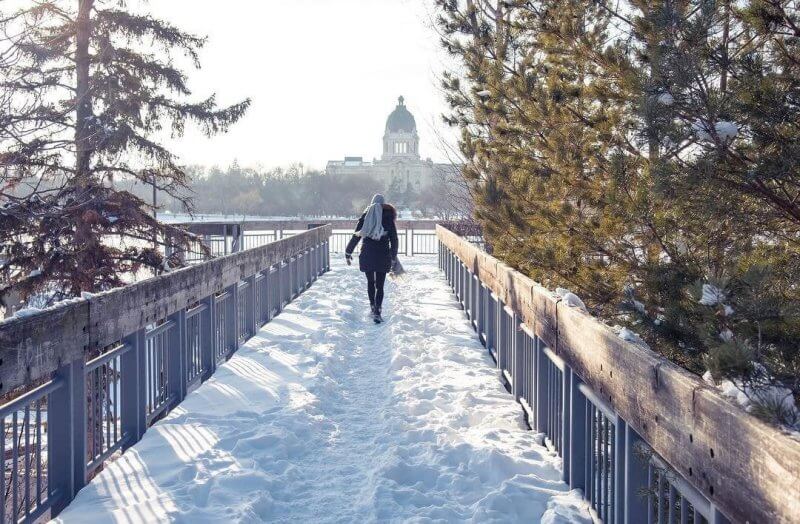
In winter, the average temperature is -17 °C. Thanks to the warm Chinook wind blowing from the west, the weather is relatively warm from time to time.
Precipitation in Saskatchewan does not fall too much – from 250 to 510 mm per year, and most of it falls in the summer in the form of rain.
Provincial economy
Agriculture, in particular the cultivation of grain crops, is the main branch of the Saskatchewan economy. Of all the wheat cultivated in Canada, 45% is grown on the land of this province. Flax, hemp and a large number of legumes are also grown – this is 99% of the lentil crop in all of Canada, 85% of chickpeas and 75% of peas.

The province of Saskatchewan has a certain economic stability due to the presence of large oil and natural gas reserves on its territory. Their intensive development began in the second half of the twentieth century. Currently, Saskatchewan is leading the country in terms of oil and gas production.
There are uranium deposits in the province, and there is a large-scale MacArthur River mine. It is this mine that accounts for 17.5% of the world’s uranium extraction, making Canada recognized as one of the leading countries in the development of this mineral.
Transport
Saskatchewan has a well-developed transport system that includes various types of transport.
Car service is the main mode of transportation in this part of Canada. Major cities and small towns in the province are connected by an extensive network of more than 26,000 km of roads and highways. The Trans-Canada Highway crosses Saskatchewan and connects it to various parts of the country. In addition, there are regional municipal roads with a variety of surfaces that serve all areas of the province: 9,000 km paved with asphalt and concrete, 5,000 km of granular pavement, 5,600 km of gravel roads.
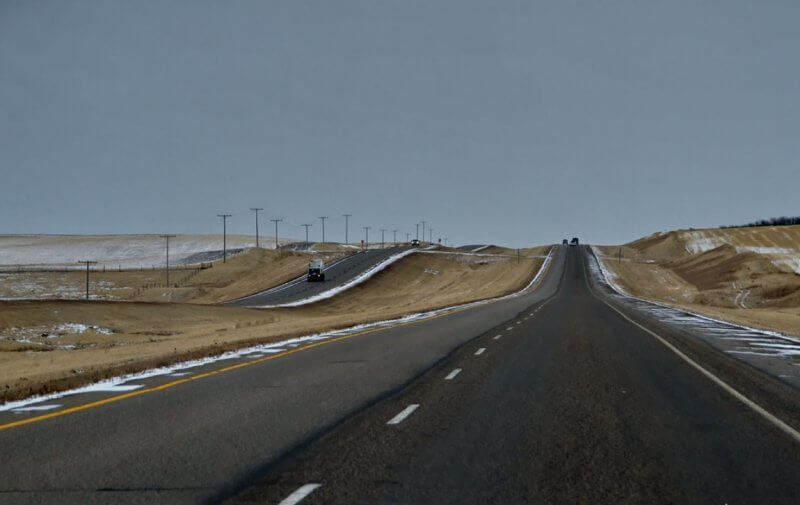
There is a well-established bus service between different cities of the province.
Air traffic is provided by several airports. The province’s main international airport, Saskatoon Airport, serves both international and domestic flights. The regional airport of Regina provides transportation of passengers within the province.
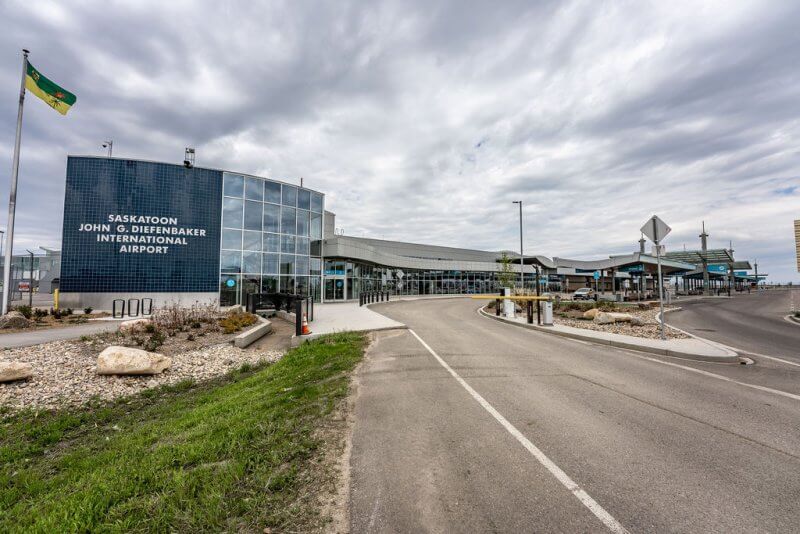
Railways connecting Saskatchewan with other provinces in Canada and the United States are used for freight transport.
Major cities in Saskatchewan
Regina
Once there was a desert prairie on this place, now it is a beautiful and incredibly green city on the shore of a man – made reservoir. Not just a city, but the administrative and cultural center of Saskatchewan, and the second most populous city in this province.
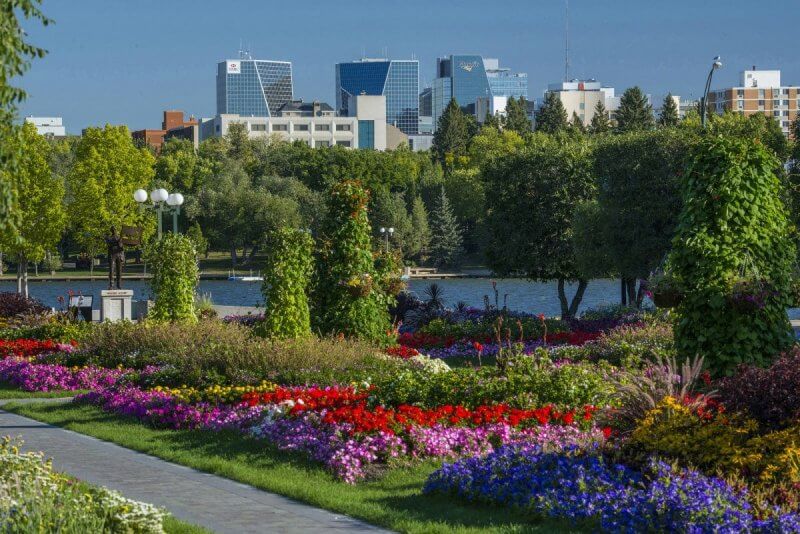
One of the most interesting architectural monuments of Regina is the building of the Legislative Assembly.
In the very center of the capital, there is a huge Vaska Center Park. This is the largest urban park on the North American continent – its area is 930 hectares.
The list of attractions in Regina includes the Royal Mounted Police Museum, which tells about the development of the north-west of Canada, as well as the Royal Saskatchewan Museum with an interesting geological exhibition and a collection of natural prairie diversity.
This city can also surprise you with its numerous night clubs and crowded bars.
Saskatoon
In the center of Saskatchewan is its largest city – Saskatoon, which is home to a fifth of the population of the entire province.

The city is located on the South Saskatchewan River, the bridges over which are the subject of its special pride. Because of the seven river crossings on the city’s territory, it is often referred to as the” city of Bridges “and”Paris of the Prairies”.
The main architectural attraction is the building of the hotel “Delta Bessboro”, which has the appearance of a real palace.
Saskatoon is also interesting for its culture. Not far from the city is Vanuskewin Park with an Indian village museum, where you can get acquainted with the life and traditions of the indigenous owners of the prairies.
Prince Albert
The third largest and most populous city in Saskatchewan is Prince Albert, located on the banks of the North Saskatchewan River.
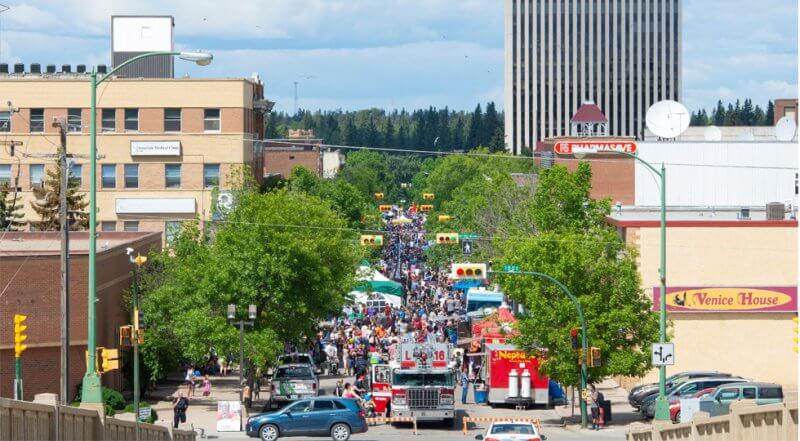
Often referred to as the “Gateway to the North”, the city is known for its beautiful green areas and lakes. There are many cozy campsites in the surrounding area, especially in Prince Albert Park.
There are several interesting museums and galleries in Prince Albert, particularly the Prince Albert Historical Museum.
Moose Jaw
It is the fourth largest city in the province in terms of size and number of inhabitants.
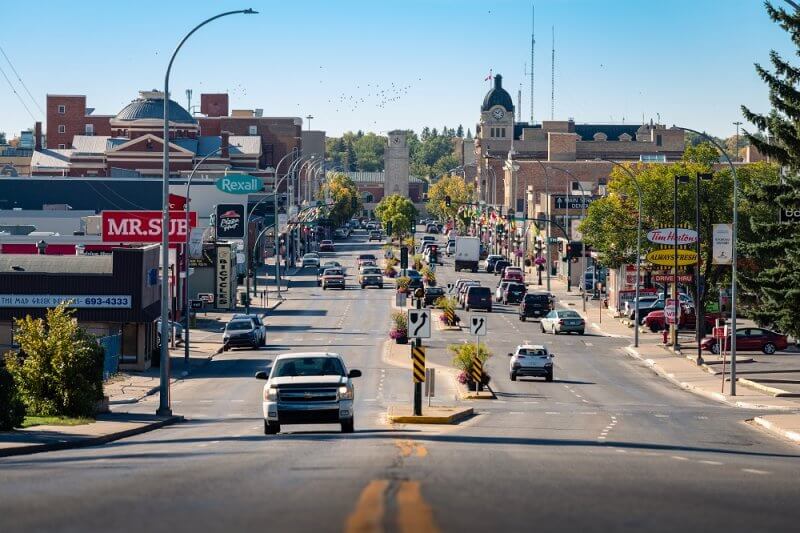
The history of its construction is interesting. At the beginning of the twentieth century, the city was a large industrial center, especially for workers at that time, underground structures were built there. After all, the region has a very harsh climate, and workers could move through underground tunnels in relatively comfortable conditions. Now tourists can go for a walk through the surviving tunnels and rooms, see numerous artifacts of those times.
Moose Jaw is known for having more hours of sunshine per year there than in other Canadian cities.
Saskatchewan points of interest
As well as across Canada, there are many National Nature Parks in the province of Saskatchewan. Each of them is unique and interesting in its own way. In addition to parks, there are other places that deserve attention: museums, galleries.
Prince Albert National Park
One of the main attractions of Saskatchewan province in Canada is Prince Albert National Park.
Fans of activities in the warm season can go there on horseback, and in winter on skis. You can also visit the picturesque Lake Vasqueciu, a popular summer resort in the region.
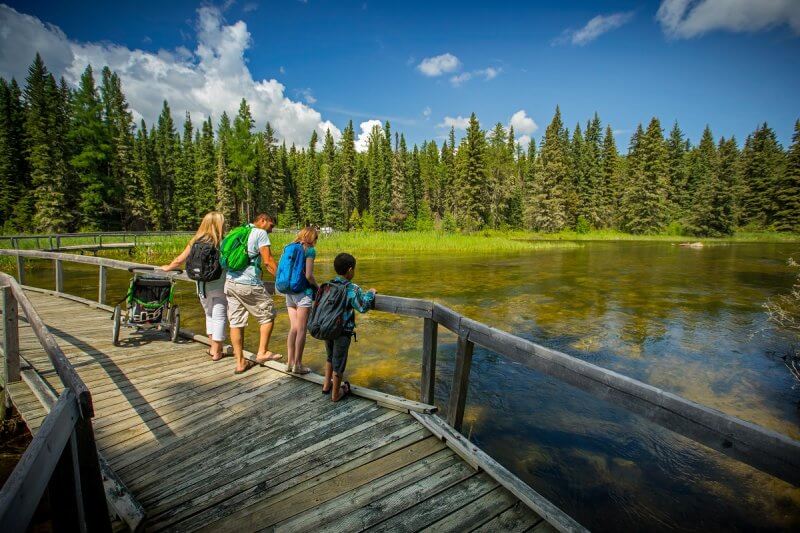
The park will also have something to do for people who are interested in the history and culture of this region. There are various objects that are estimated to be thousands of years old – they are related to the Indians who lived there.
The park is home to moose, various types of deer, coyotes, lynxes, and wolves. There are also bison-one of their herds, which are protected in parks in Canada. There are almost 200 species of birds, including the country’s second-largest population of white pelicans.
Saskatoon Forestry Farm Park & Zoo
Saskatoon Forestry Farm Park & Zoo is a forest park recognized as a National Historic Landmark of Canada.
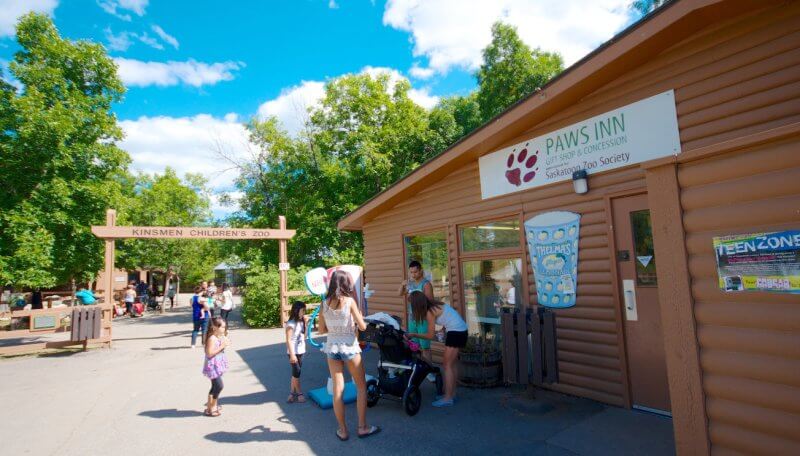
The park has an extensive demonstration forest area. Previously, it was part of a nursery where ash, maple, elm, caragana, and willow were grown. In addition to these plants, there is a large-scale rose garden. A spacious area called “Meditation Garden” is waiting for those who want to be alone in silence with nature.
There is a picturesque rainbow trout Fishing Pond in the park, as well as a zoo, which is home to more than 80 species of animals.
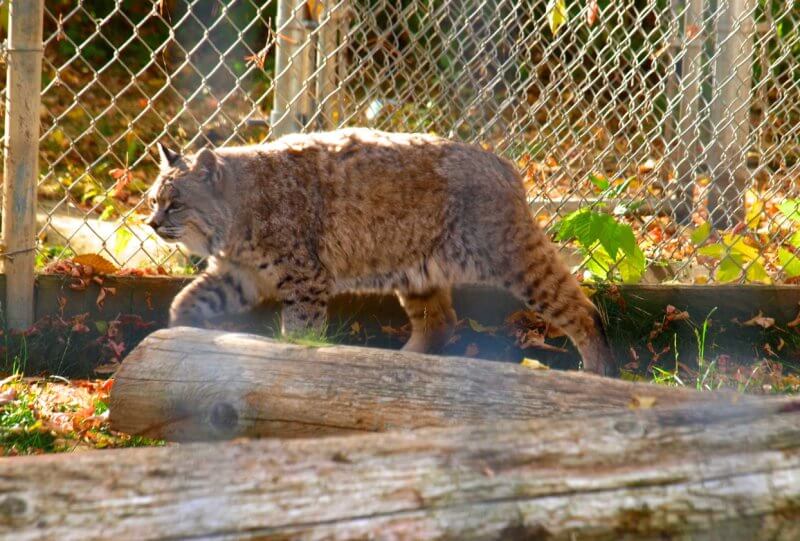
For those who want to organize a picnic in nature, a gazebo with a capacity of up to 100 people is provided. You can buy various souvenirs in the special store Paws Inn.
It is worth seeing the Forestry House, officially recognized as a cultural heritage site in Canada. This historical building of the early twentieth century, built in the Georgian style.
The park regularly hosts guided tours.
Place of interest: 1903 Forestry Farm Park Drive, Saskatoon, SK, CA S7S 1G9.
Western Development Museum (WDM) – Moose Jaw
The Western Development Museum is Saskatchewan’s largest museum of human history, with nearly 80,000 artifacts. WDM has 4 branches, all located in the province and each focused on a different topic.
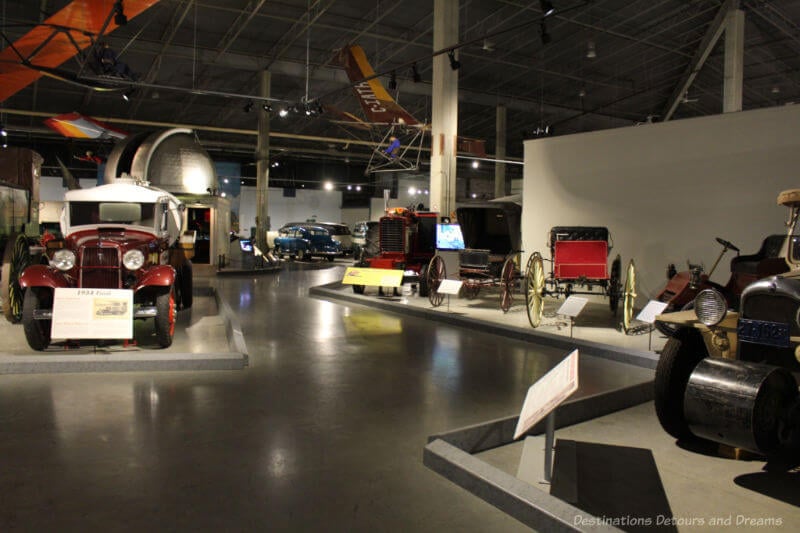
- Moose Jaw – Istria of Transport. This location is dedicated to all aspects of transportation, with a special focus on aviation. There is also a section with a narrow-gauge railway, which runs the only active steam locomotive in Saskatchewan.
- North Battleford-A heritage farm and village. The Battleford Branch recreates an entire village of prairie pioneers, so visitors can experience different aspects of their lives. In addition to residential buildings, the village has several churches and businesses, an elevator, a cooperative store, and a large shed with pets.
- Saskatoon-Boomtown in 1910. Saskatoon Exhibition is a recreation of the” thriving city ” of the early twentieth century. Among the reconstructions and authentic buildings located on the territory of the museum, there is a manor house, a bank, a police station, a dentist, several shops, a printing house with working equipment. The exhibition also features vintage cars and agricultural machinery.
- Yorkton-A history of people. The Yorkton branch is focused on the immigrant experience. Numerous exhibits tell about the cultural heritage of various ethnic groups living in western Canada: Germans, Ukrainians, English, Swedes and others.
Ukrainian Museum of Canada
In 1941, the Association of Ukrainian Women of Canada organized a Museum of Ukrainian Culture in Saskatoon. The Modern Ukrainian Museum in Canada is a network of museums across the country that promote Ukrainian culture, with a particular focus on the experience of the Canadian Ukrainian diaspora. Saskatoon is now the museum’s headquarters, with branches in Winnipeg, Toronto, Edmonton, Calgary and Vancouver.
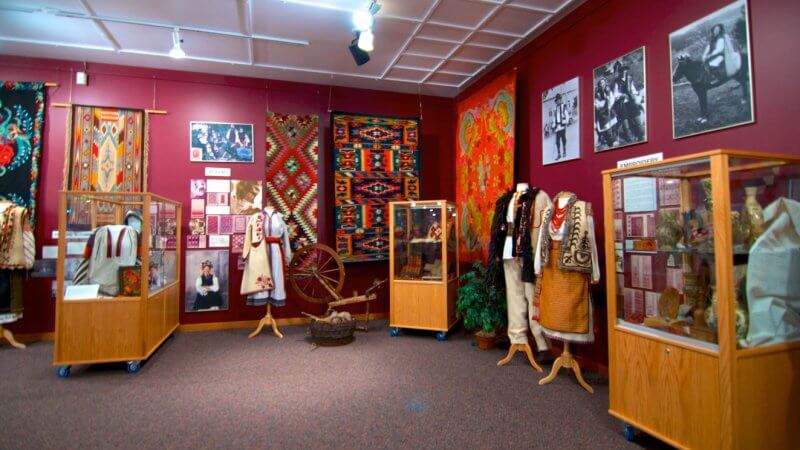
The museum not only offers a rich selection of cultural heritage, but also organizes fairs, concerts, exhibitions, and book presentations.
In 2022, the museum staff reported that the number of visitors has increased and the public has increased interest in museum collections. They believe that this is a kind of people’s response to Russia’s treacherous invasion of Ukraine.
The headquarters of the Museum of Ukrainian Culture is located at 910 Spadina Crescent E, Saskatoon, SK S7K 3H5, Canada.
Interesting facts
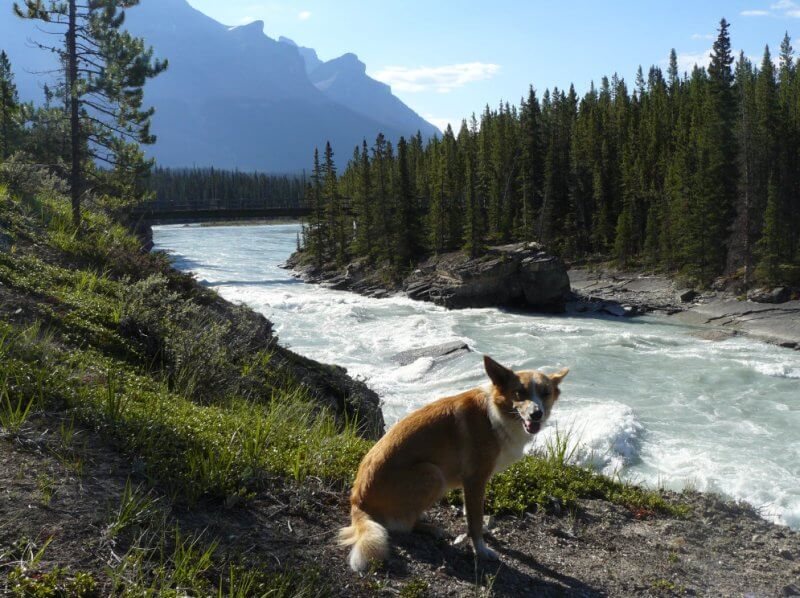
- The province of Saskatchewan is named after the river of the same name. In the dialect of the North American Cree Indians, this name means “fast river”. The Saskatchewan River was of great importance to the European settlers who were developing Canada: flowing from west to east, it became an important transport artery for their progress.
- Europeans began exploring Saskatchewan in 1690, and it wasn’t until 1774 that their settlements were established. Initially, this land belonged to several Indian tribes, but they were almost completely exterminated.
- Saskatchewan was granted provincial status in 1905.
- The provincial flag was adopted in 1969. It is painted in green and golden colors: the green top is the forests in the north, the golden bottom is the wheat fields and prairies in the south. Among the 4,000 flag design projects, the winner was a sample created by Anthony Drake.
- The province of Saskatchewan has several symbols: a checkered cloth, a license plate, and a flower. The checkered fabric, which includes 7 colors, was officially registered in Scotland in 1961. The license plate contains the motto “Land of the living sky”. The symbol of Saskatchewan is the red lily.
- Saskatchewan is the only land-locked province in Canada. This is also the only province in the country where all the borders were created artificially-this explains the shape in the form of a regular rectangle.
- In Saskatchewan, the cities of Yellow Grass and Meadail experienced the highest temperature in Canada: +45 °C. The lowest temperature index in the province was recorded in Prince Albert: -56.7 °C.
- Of all the provinces in Canada, Saskatchewan is the most likely place to experience natural disasters. Strong winds are quite common, and tornadoes of varying strength regularly appear. They usually occur 12-18 times a year, and in 2012-a record 33 times.
- In 1971, before the Canadian Winter Games, Black Stretch Mountain was built near Saskatoon with a ski track. This artificial mountain is still the highest in Canada.
- Saskatchewan has the largest moving dunes in Canada. The Athabasca dunes, with dunes rising 30 meters high, stretch for almost 100 km.
- Saskatchewan has an incredibly extensive road network – more than any other province in the country.
- As in all of Canada, medical practitioners in Saskatchewan are not government employees. But in this province, all medical services are subject to tariffs that doctors are not allowed to exceed.
- Saskatchewan’s only professional team is the Saskatchewan Roughriders. Fans of this football team are all over Canada, they are known as “Riders of the nation”.
- Most of the life of the famous Englishman, a naturalist of the same name, was spent in the Prince Albert National Park.
- The television series “Little Mosque on the Prairie” and “Corner Gas” were filmed in small towns in Saskatchewan, Canada.

